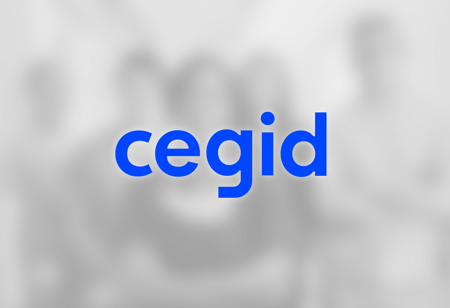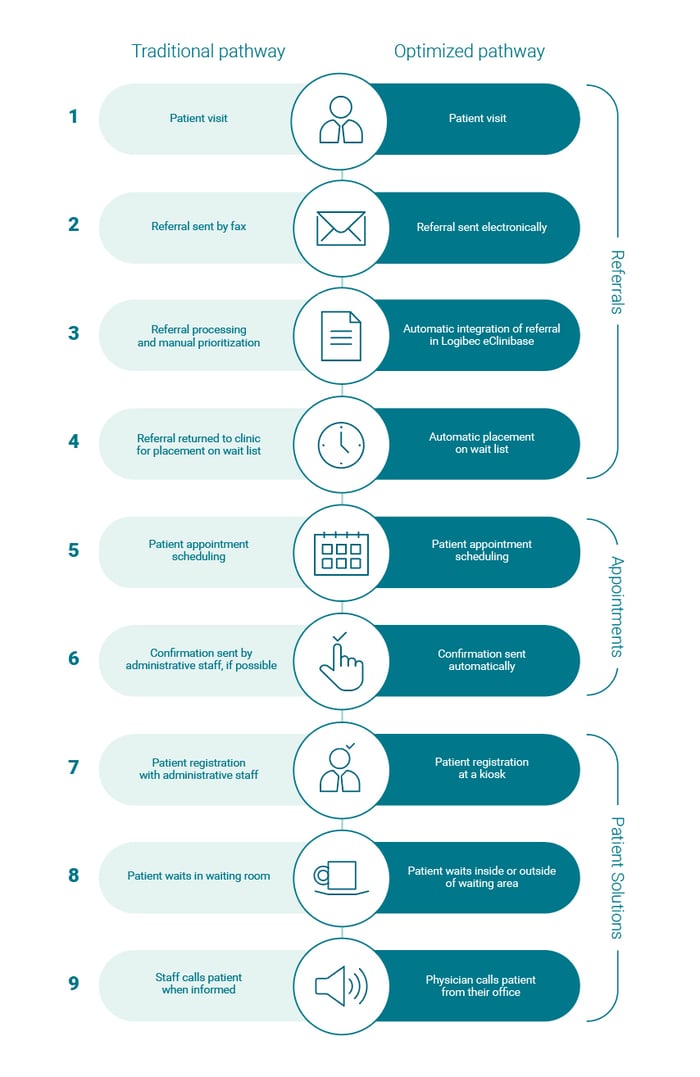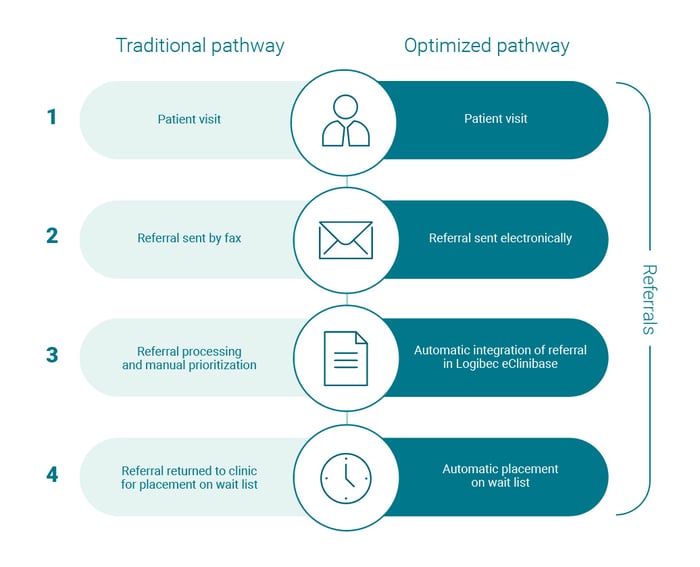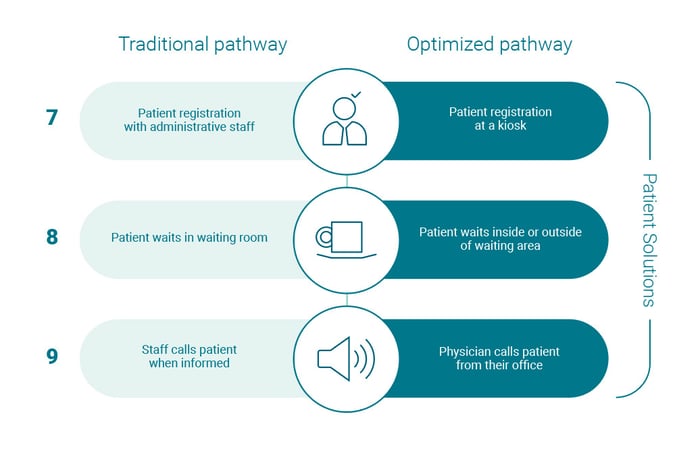LGI eClinbase New 2023 Features: An Optimized Care Pathway

The article you are about to read was published before October 5, 2023, when LGI Healthcare Solutions was still named "Logibec". It is therefore possible that the text or certain images refer to the company's former branding, as well as the former naming of our solutions. Thank you for understanding.
The latest version of Logibec eClinibase further optimizes the patient care pathway with enhancements to the Referrals, Appointments, and Patient Solutions modules.
Read on to find out the positive impacts these improvements bring to your internal processes, including fewer emails and faxes as well as increased autonomy and time savings for healthcare professionals, administrative staff, and patients alike.
Optimized Care Pathway
To properly understand the advantages of the latest version of Logibec eClinibase, it’s best to compare the traditional care pathway with one optimized by the recently updated modules. You may find that some of your facility’s processes align with the traditional pathway, and others with the optimized pathway — it all depends on your level of digitization.
The Traditional Care Pathway
The traditional patient pathway process is as follows:
- The patient visits their referring physician
- The referring physician sends the referral by fax
- The paper referral is received, processed, and manually prioritized
- The referral is returned to the clinic and placed on a waitlist
- An administrative staff member schedules the patient's appointment
- An administrative staff member confirms the appointment, if possible
- On the day of the appointment, an administrative staff member takes the patient’s information upon arrival
- The patient must wait in the waiting area
- The specialist advises staff that they are ready to see the patient
The Care Pathway Optimized by Logibec eClinibase
The key modules of Logibec eClinibase optimize the process, making it less time-consuming and costly than the traditional pathway. The solution speeds up patient management, provides greater visibility into the care pathway, and facilitates the intervention of healthcare staff by communicating information more effectively. Thus, in the optimized pathway:
- The patient visits their referring physician
- The referring physician sends the referral directly to the CRDS
- The referral is automatically integrated into Logibec eClinibase
- Once accepted, the referral is automatically placed on a waitlist
- An administrative staff member schedules the patient's appointment
- An appointment confirmation is automatically sent via email, text, and/or phone call
- On the day of the appointment, the patient checks in at a self-serve kiosk
- The patient can wait outside the waiting area and will receive a text when the specialist is ready to see them
- The specialist can view the wait list and call the patient from their office
Three Modules Serving Patients and Healthcare Teams
Logibec eClinibase’s optimized care pathway is based on three key modules that have been developed to address the labor shortage in healthcare facilities, particularly by automating processes. The dozens of new functionalities also reduce the risk of input errors and facilitate the centralization of information.
1. The Referrals Module
This module centralizes all patient referrals and requests for consultations or examinations from both internal and external sources. It also allows wait lists to be managed according to customized rules.
In practical terms, it facilitates prerequisite and form management:
- The prerequisites are attached to referrals and digitized. For example, when a patient needs to see a cardiologist, they require a consultation for an ECG beforehand.
- The status of prerequisites is available in real-time, making it possible to view all referrals.
- The form is automated and consolidates all referrals, giving healthcare professionals greater autonomy. More specifically, the module connects with the Electronic Medical Record (EMR) and facilitates communication between the various internal departments.
2. The Appointments Module
This module speeds up the management of subspecialty appointments with the CRDS and clinics through automated confirmation, multiple appointment scheduling, quotas, and overbooking options.
It facilitates inter-facility searches for availabilities and provides easy access to time slots thanks to flexible control and security settings:
- Communications are automated and cataloged, including appointment confirmation and cancellations, as well as reminders via text, email, and/or phone messages.
- Completed prerequisites are easy to identify, making it possible to better manage appointments in relation to wait times.
- A notification appears on the screen if a patient has not completed a prerequisite when their appointment is being scheduled.
- The interface prompts the health care professional to place the patient on a waitlist for a follow-up appointment so they don’t have to complete a request on paper post-consultation.
3. The Patient Solutions Module
This module facilitates patient intake and guidance via check-in kiosks and waiting area screens:
- The patient receives their registration ticket number via text message.
- The patient (and their companion, if applicable) receive a second text message when they are called by the healthcare professional and their number appears on the screen.
- During the appointment with the healthcare professional, they are placed on a waitlist for a follow-up visit.
- The Patient Solutions module can be integrated into Logibec EDM, enabling the health care professional to add consultation notes, view the waiting room list, and manage virtual wait times.
New APIs for the CRDS and Appointment-Scheduling Platforms
Additional integrations allow the CRDS and various appointment scheduling platforms to query the schedules available in Logibec eClinibase to simplify your processes.
Logibec eClinibase can be integrated into many other systems in the health care network, such as Microsoft Teams, to avoid double entry of appointment information.
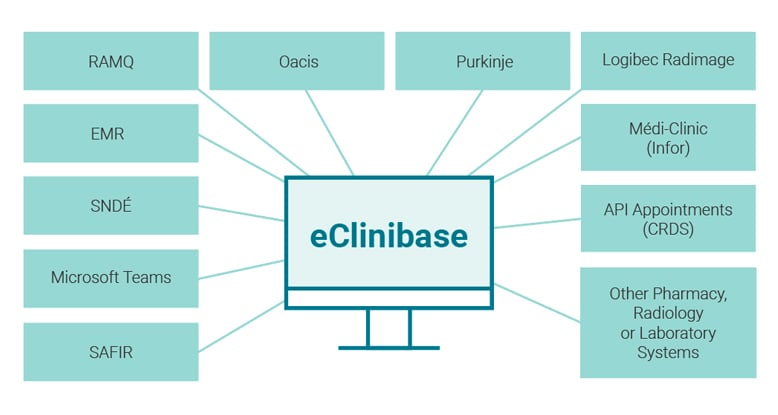
10 Key Benefits of the New Logibec eClinibase Features
The new additions to the key Logibec eClinibase modules optimize the care trajectory with:
- Fewer emails and faxes sent
- Faster referral processing
- Reduced risk of errors in consultation prerequisites
- Greater autonomy for healthcare professionals for follow-up wait times
- Elimination of paper and double entries
- Lower risk of document loss
- Elimination of referrals that are completed in the CRDS but not closed
- More efficient patient service with fewer intermediaries and less stress
- Greater autonomy for patients when making appointments
- Streamlined intake of patients arriving at the clinic
Learn More About the Latest Version of Logibec eClinibase
For an in-depth overview of what’s new in Logibec eClinibase, watch our recording webinar covering the new features (available only in French).


